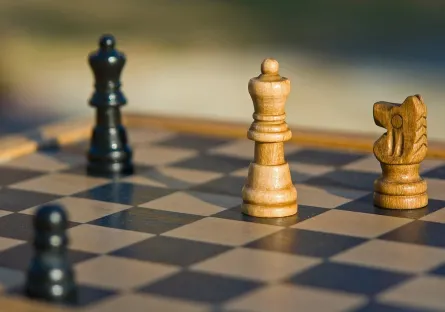
We have quite a few phrases to describe it. “Getting locked in.” “I’m in the zone.” "I'm dialed in." "I am on a roll." All these sayings point to a common human condition: that feeling of self-confidence and power that comes from when we’re most in our element. When we’re going with the flow, it feels like all the obstacles of life have been swept aside. For a brief moment, we feel like Super Mario after getting a star power-up: luminous, fast-moving, and untouchable.
There’s a proper term to describe this feeling of being in the zone: flow. For this week’s Wellness Wednesday, we’re taking a look at flow states and what it really means to go with the flow.
What is Flow?
Flow refers to a concept coined by the psychologist Mihály Csíkszentmihályi. A flow state is when we are “locked in” or hyperfocused on one particular task. Flow is a state of immersion in which we are singularly focused on an activity to the point that time passes by without you noticing it. People in flow states often describe it as being akin to playing jazz— your thought processes become more intuitive and spontaneous while you are “in the zone.” When we are experiencing flow, we are in our element, using our skills to the utmost, completing projects and making accomplishments that feel easy because we’re so deeply engrossed in the whole process.
What Triggers a Flow State?
With its focus on being present and in the moment, flow states bear some similarities to mindfulness. The key difference between being in flow versus a mindful meditation is that mindfulness tends to be more passive. When you’re doing mindfulness, you’re trying NOT to be deeply engaged in an activity. With flow, it’s the opposite: one cannot get in the zone of flow without intense engagement with an activity or task that requires a combination of personal effort and skill.
To figure out what puts you in a flow state, ask yourself a few questions. Is there something you do- a hobby, a work practice, a form of exercise- where you find yourself ignoring distractions while you’re doing it? Is there something you like to do that causes you to lose track of time while you’re practicing it? Is there a skilled practice you do that makes you feel good and re-energized both while you’re doing the practice and after you’ve completed it? A lot of things can trigger a flow state: writing, computer programming, chess, knitting, painting miniatures, athletics, even cooking.
According to Csikszentmihalyi, an activity needs to have these eight factors associated with it in order to trigger a flow state:
- Complete concentration on the task at hand
- Clarity of goals and reward in mind
- The sensation of time speeding up or slowing down
- The experience is intrinsically rewarding
- A feeling of effortlessness and ease
- The task offers a balance of skills and challenges (too easy or too hard and you’ll be too distracted/disinterested to get into flow)
- Action replaces thought, feelings of self-consciousness are reduced
- A sense of control/mastery over the task
A key component of flow is that the activities are autotelic experiences. An autotelic experience is one that is done for its own sake; you may get some kind of reward for completing it, but that isn’t the point of it. An autotelic experience is something you do because you derive satisfaction from doing it, and it’s something you would still do even if there was no reward or tangible gain associated from it.
Benefits of Flow
When we enter a flow state, our brains release a cocktail of neurochemicals that include endorphins, dopamine, and serotonin. These are pleasure-inducing, stress-relieving hormones that also offer clarity and focus. It’s part of the reason focusing so much on one thing can feel so rewarding; we’re chasing the “reward” of dopamine, which can trigger when we feel we’ve made an important achievement.
Flow puts us in a state of deep concentration, which can sharpen our overall ability to focus over time. It also can increase motivation and encourage the development of self-discipline. Flow can also increase our sense of well-being as it elevates our mood while we’re in that state.
Article by Austin Brietta
Want more wellness tips? Check out these stories: